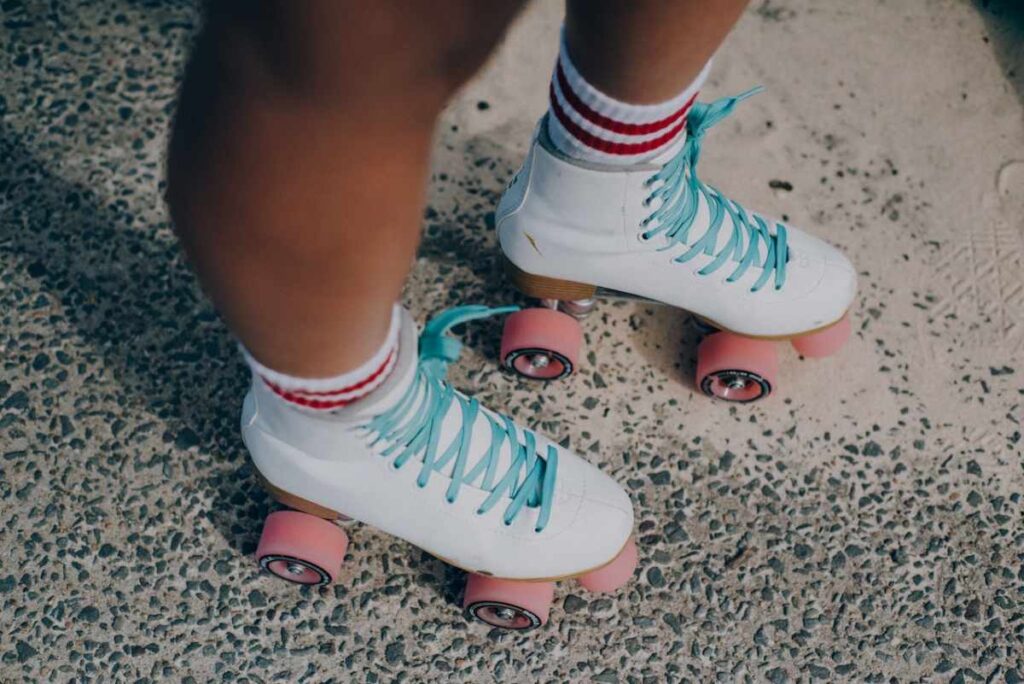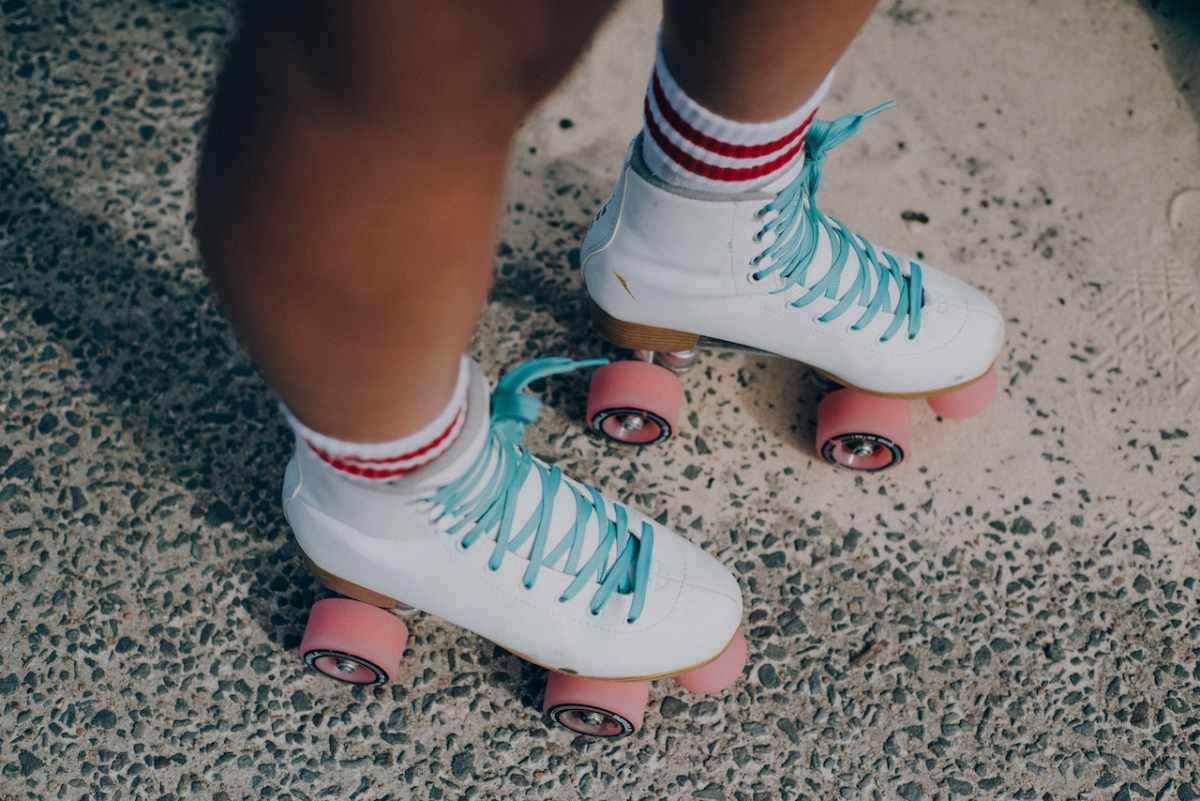
How to Use a Skateboard: A Comprehensive Guide for Beginners
Skateboarding, a thrilling blend of sport, art, and lifestyle, has captivated generations. Whether you’re drawn to the adrenaline rush of performing tricks or the simple pleasure of cruising down the street, learning how to use a skateboard opens up a world of possibilities. This comprehensive guide provides beginners with the essential knowledge and steps to get started safely and confidently. We’ll cover everything from choosing the right equipment to mastering basic techniques, ensuring a smooth and enjoyable introduction to the world of skateboarding.
Choosing the Right Skateboard
Before you even think about riding, you need a skateboard. But not all skateboards are created equal. Here’s a breakdown of what to look for:
- Deck: The wooden platform you stand on. Standard decks are typically made of 7-ply maple. Width is crucial; beginners often find a deck between 7.75″ and 8.25″ comfortable.
- Trucks: The metal axles that attach the wheels to the deck. The truck’s width should match the deck’s width for optimal stability.
- Wheels: Come in various sizes and hardness. Softer wheels (78a-87a durometer) are better for cruising and rough surfaces, while harder wheels (95a-101a) are preferred for skateparks and tricks.
- Bearings: These sit inside the wheels and allow them to spin freely. ABEC ratings (1, 3, 5, 7, 9) indicate precision, with higher numbers generally meaning faster speeds. For beginners, ABEC 3 or 5 bearings are sufficient.
Consider purchasing a complete skateboard to start. These come pre-assembled and are a cost-effective way to get rolling. As you progress, you can upgrade individual components to suit your riding style.
Essential Safety Gear
Safety should always be your top priority when learning how to use a skateboard. Invest in the following protective gear:
- Helmet: A properly fitted helmet is non-negotiable. Look for one that meets safety standards like CPSC or ASTM.
- Knee Pads: Protect your knees from scrapes and impacts, especially when learning to fall.
- Elbow Pads: Similar to knee pads, elbow pads offer protection during falls.
- Wrist Guards: Wrist injuries are common in skateboarding. Wrist guards provide support and prevent fractures.
- Shoes: Wear flat-soled shoes with good grip. Skate shoes are specifically designed for skateboarding and offer enhanced board feel and durability.
Finding a Safe Practice Area
Choose a smooth, flat surface away from traffic and obstacles. Ideal locations include empty parking lots, skateparks (during off-peak hours), or quiet residential streets. Avoid areas with gravel, cracks, or other hazards that could cause you to lose control.
The Basic Stance
Before you start rolling, you need to determine your stance: regular or goofy. Regular stance means you ride with your left foot forward, while goofy stance means your right foot is forward. Here’s how to use a skateboard to figure out your natural stance:
- Have someone gently push you from behind. The foot you instinctively put forward to catch yourself is likely your lead foot.
- Imagine sliding on ice or snow. Which foot would you naturally place forward?
Once you’ve determined your stance, practice standing on the board. Place your front foot just behind the front bolts at a slight angle, and your back foot similarly positioned near the back bolts. Bend your knees slightly and keep your weight centered over the board. Get comfortable balancing before you attempt to move.
Pushing and Gliding
Now it’s time to learn how to push and glide. Here’s how to use a skateboard for this essential skill:
- Place your front foot on the board as described above.
- Use your back foot to push off the ground, propelling yourself forward.
- Once you’ve gained some momentum, place your back foot back on the board near the back bolts.
- Maintain your balance by bending your knees and keeping your weight centered.
- Practice pushing with both feet to develop ambidexterity.
Focus on smooth, controlled pushes rather than frantic, jerky movements. The key is to maintain your balance and keep your eyes focused on where you’re going.
Learning to Turn
Turning is essential for navigating obstacles and changing direction. There are two basic turning techniques:
- Leaning: Gently lean in the direction you want to turn. The more you lean, the sharper the turn. This technique is suitable for gradual turns and maintaining speed.
- Tic-Tac: This involves shifting your weight from heel to toe (or vice versa) while slightly lifting the front wheels. This allows you to pivot the board and make sharper turns.
Start by practicing leaning. Find an open area and try making gentle turns in both directions. Once you’re comfortable with leaning, try the tic-tac technique. This may take some practice, but it’s a valuable skill to master.
Stopping Safely
Knowing how to use a skateboard to stop is just as important as knowing how to go. Here are a few methods:
- Foot Braking: The most basic stopping technique. Simply drag your back foot on the ground to slow down. Be careful not to apply too much pressure, as this can cause you to lose control.
- Heel Drag: Similar to foot braking, but you use the heel of your back foot to apply pressure. This can be more effective on smooth surfaces.
- Carving: Making a series of sharp turns to bleed off speed. This technique requires more practice and control.
Practice these techniques in a safe, controlled environment until you feel comfortable stopping quickly and reliably. Always be aware of your surroundings and anticipate potential hazards.
Mastering the Ollie
The ollie is the foundation for many advanced skateboarding tricks. It’s a jump that allows you to clear obstacles and perform more complex maneuvers. Here’s a simplified breakdown of how to use a skateboard to perform an ollie:
- Position your feet: Place your back foot on the tail of the board and your front foot slightly behind the front bolts.
- Crouch down: Bend your knees and prepare to jump.
- Pop the tail: Snap your back foot down on the tail, causing the front of the board to lift off the ground.
- Slide your front foot: As the board rises, slide your front foot up towards the nose. This will level out the board in the air.
- Land: Bring your knees up to absorb the impact and land with both feet on the bolts.
The ollie requires a lot of practice and coordination. Don’t get discouraged if you don’t get it right away. Keep practicing, and you’ll eventually master it.
Common Mistakes to Avoid
As a beginner, you’re likely to make mistakes. Here are some common pitfalls to watch out for:
- Looking down: Keep your eyes focused on where you’re going. Looking down at your feet can throw off your balance.
- Stiff knees: Bend your knees to absorb shocks and maintain balance.
- Leaning too far forward or backward: Keep your weight centered over the board.
- Pushing with your front foot: Always push with your back foot.
- Not wearing safety gear: Safety gear is essential for preventing injuries.
Tips for Continued Improvement
Here are some tips to help you progress in your skateboarding journey:
- Practice regularly: The more you practice, the better you’ll become.
- Watch videos and learn from others: Observe experienced skaters and try to emulate their techniques.
- Set realistic goals: Start with basic skills and gradually progress to more challenging tricks.
- Don’t be afraid to fall: Falling is part of the learning process. Get back up and keep trying.
- Have fun: Skateboarding should be enjoyable. Don’t take yourself too seriously and remember to have fun.
Skateboarding Etiquette
Understanding skateboarding etiquette is crucial, especially at skateparks. Respect other skaters, wait your turn, and avoid getting in their way. Be mindful of your surroundings and avoid skating in crowded areas. Pick up your trash and leave the area clean. [See also: Skatepark Rules and Etiquette]. Knowing how to use a skateboard also means knowing how to be a responsible member of the skateboarding community.
The Joy of Skateboarding
Learning how to use a skateboard can be challenging, but it’s also incredibly rewarding. The feeling of mastering a new trick or cruising down the street with the wind in your hair is unmatched. With patience, practice, and a commitment to safety, you can unlock the joy and freedom that skateboarding offers. So grab your board, put on your safety gear, and start rolling! Remember to always prioritize safety and have fun while learning how to use a skateboard. This guide provides a solid foundation, but continuous practice and learning are key to improvement. Find local skate communities or online forums to connect with other skaters and share your experiences. Explore different skate styles, from street skating to vert skating, and discover what resonates with you. The possibilities are endless when you know how to use a skateboard!
Skateboarding is more than just a sport; it’s a lifestyle. It’s a community, a form of self-expression, and a way to challenge yourself both physically and mentally. Embrace the journey, celebrate your progress, and never stop learning. This is how to use a skateboard to not just ride, but to truly live.
Ultimately, mastering how to use a skateboard is a personal journey. There’s no right or wrong way to skate, as long as you’re having fun and staying safe. Experiment with different techniques, find your own style, and express yourself through your riding. The world is your skatepark. Go explore it!

